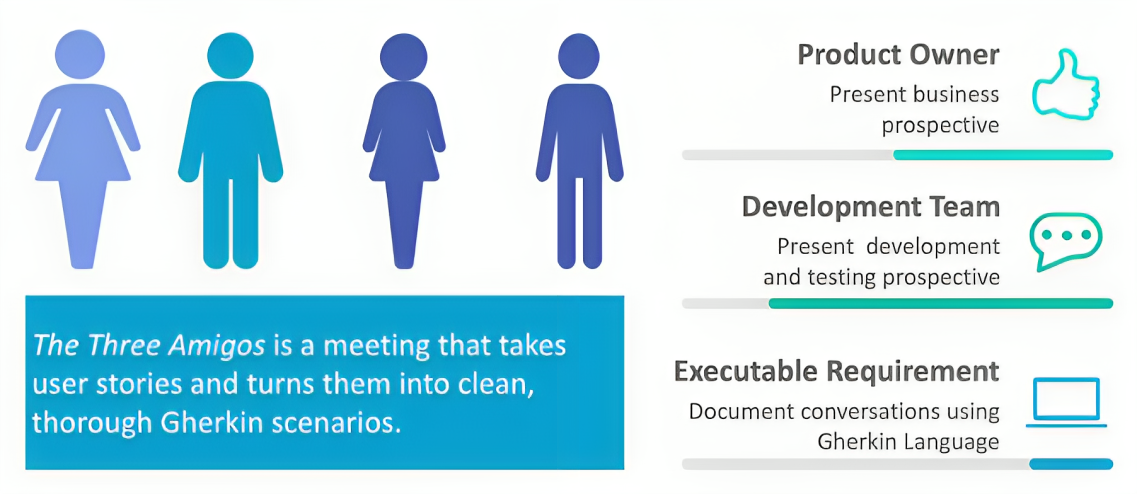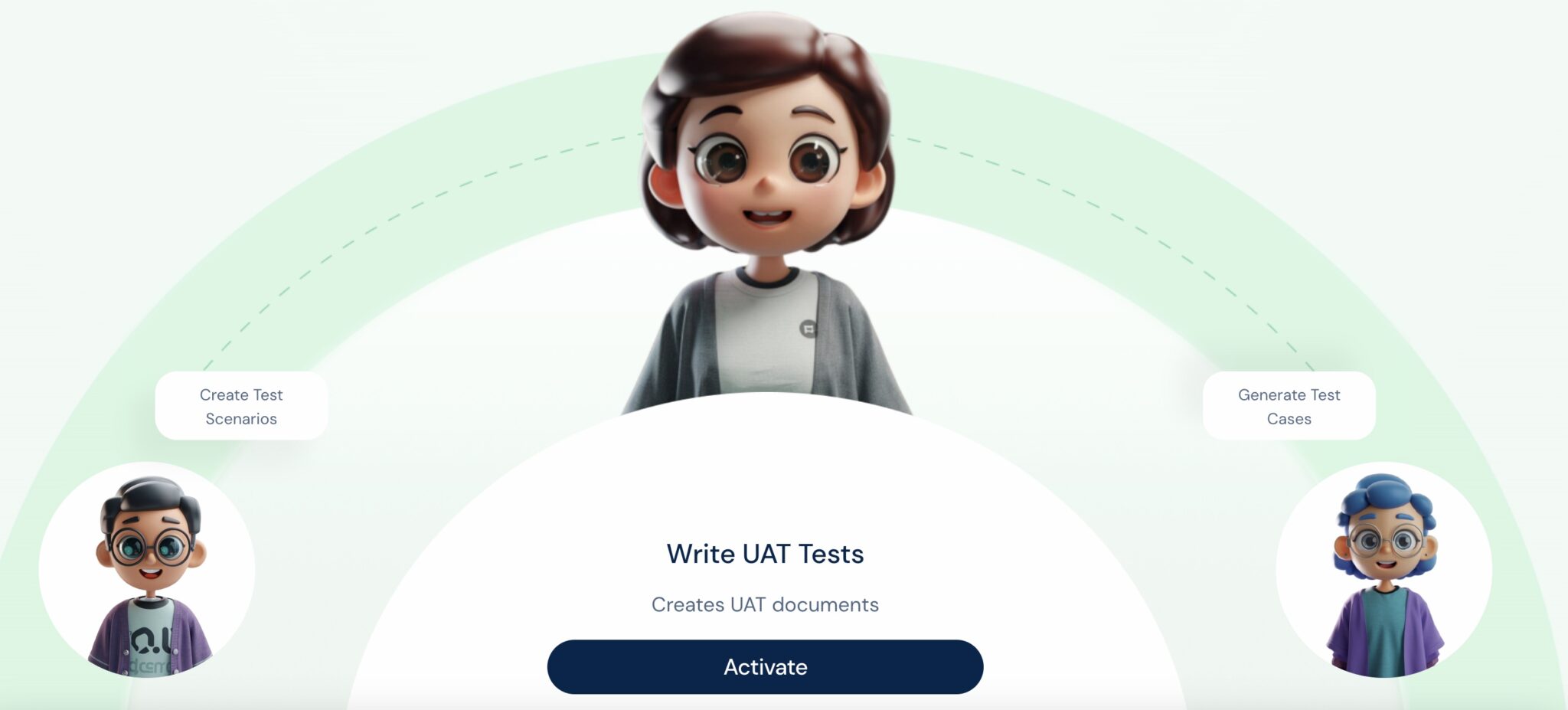Introduction
- Behavior Driven Development (BDD) testing is a collaborative approach involving business stakeholders, developers, and testers to enhance software quality.
- This methodology offers seven distinct benefits that ensure high-quality software.
Benefits of BDD Testing

Benefits of BDD Testing
- Improved Collaboration:
- Encourages alignment among stakeholders, developers, and testers on business goals and software objectives.
- Promotes shared understanding, reducing miscommunication and fostering teamwork.
- Encourages alignment among stakeholders, developers, and testers on business goals and software objectives.
- Greater Clarity:
- Utilizes plain language syntax, making it comprehensible to non-technical stakeholders.
- Enhances communication, allowing business stakeholders to articulate requirements effectively.
- Utilizes plain language syntax, making it comprehensible to non-technical stakeholders.
- Enhanced Test Coverage:
- Focuses on testing the software’s behavior, ensuring comprehensive coverage of crucial scenarios.
- Minimizes the risk of introducing bugs and other issues into the software.
- Focuses on testing the software’s behavior, ensuring comprehensive coverage of crucial scenarios.
- Faster Feedback:
- Provides rapid feedback to developers, expediting issue identification and resolution.
- Supports on-time and on-budget software delivery by reducing debugging time.
- Provides rapid feedback to developers, expediting issue identification and resolution.
- Reduced Costs:
- Identifies and addresses issues early in the development process, decreasing overall development expenses.
- Prevents costly late-stage issue resolution, making development more cost-effective.
- Identifies and addresses issues early in the development process, decreasing overall development expenses.
- Increased Agility:
- Adaptable and flexible testing methodology accommodating changing business requirements.
- Ensures continuous alignment of software with evolving business goals and objectives.
- Adaptable and flexible testing methodology accommodating changing business requirements.
- Improved Quality:
- Guarantees that the software aligns with business requirements and is of high quality.
- Provides end-users with reliable, user-friendly software that meets their needs effectively.
- Guarantees that the software aligns with business requirements and is of high quality.
Rise of BDD in Software Development:
- Current market research comprehensively forecasts the increased adoption of BDD tools’ from 2022 to 2029.
- Key players like IBM, Wells Fargo, and CitiBank are embracing BDD, emphasizing its growing significance in the industry.
How BDD and Test Management Synergize:
- Test Management Focus:
- Monitors and manages a suite of tests to assess system quality.
- Ensures efficient resource utilization and project risk mitigation.
- Monitors and manages a suite of tests to assess system quality.
- BDD’s Core Practices:
- Discovery: Promotes shared understanding through collaboration.
- Formulation: Documents system behavior using business domain terminology.
- Automation: Drives implementation through automation, involving the delivery team.
- Discovery: Promotes shared understanding through collaboration.
Alignment with Agile Methodology:
- BDD is a methodology that complements the Agile approach by incorporating ongoing input from an end user’s perspective.
- The three foundational practices of BDD are as follows:
- Discovery: This practice focuses on establishing a shared understanding of project requirements through collaborative efforts. It often involves structured discussions regarding rules and examples.
- Formulation: Case studies are used to document system behavior examples in terminology that aligns with the business domain.
- Automation: The design and implementation process is strongly influenced by automation, and it necessitates full engagement from the delivery team before composing the corresponding implementation code.
Leveraging BDD and Test Management for Software Testing:

Enhanced Project Collaboration:
- Traditional programming language-based tests can be perplexing for non-technical business stakeholders.
- BDD fosters cohesive communication among stakeholder groups, mitigating potential misunderstandings about user scenarios and rectifying errors in tests crafted in plain English.
- BDD champions frequent discussions among key stakeholders, often referred to as the “Three Amigos,” including:
- Business Team (BA): Comprising the Product Owner or a Business Analyst, responsible for defining the problem to be addressed by the product.
- Development Team (DevOps): Comprising developers who devise solutions for problem resolution.
- QA Team: Comprising testers who identify defects in the product, verify its functionality, and uncover edge cases that might lead to product failure.
- Increases Project Collaboration:
- BDD encourages clear communication among stakeholders, reducing misunderstanding.
- Facilitates early test development through collaboration, known as the “Three Amigos.
- BDD encourages clear communication among stakeholders, reducing misunderstanding.
- Better Test Coverage Assurance:
- BDD scenarios are focused, reducing ambiguity for developers.
- Maps BDD scenarios with Application Lifecycle Management Tool Requirements, ensuring alignment with business requirements.
- BDD scenarios are focused, reducing ambiguity for developers.
- Simplifies Translation into Automated Tests:
- BDD’s framework simplifies replicable automated tests.
- Best practices like using a background in scenarios and data tables for data parameterization improve automation.
- BDD’s framework simplifies replicable automated tests.
Conclusion:
- Behavior-driven Development (BDD) testing is instrumental in ensuring high software quality by emphasizing collaboration, test coverage, and clarity.
- Synergizing BDD with test management optimizes software testing, increases collaboration, enhances test coverage, and simplifies test automation.
- The BDD approach, supported by modern test management practices, paves the way for superior software quality, on-time deliveries, and cost-efficiency in software development.
aiTest: A Closer Look
aiTest an all-in-one testing platform. This platform is designed to conduct comprehensive testing on your applications concurrently. It supports cross-browser and browser version testing, as well as functional and performance tests integrated with Analytics. Additionally, the platform incorporates automation features, including an LLM for effortless generation and testing of machine learning models and generating test data for the same. One-stop solution for continuous testing, integrating seamlessly with CI/CD pipelines. With support for multiple languages and specialized testing for AI/ML services, aiTest empowers organizations to speed up their release cycles while ensuring quality and reliability.


